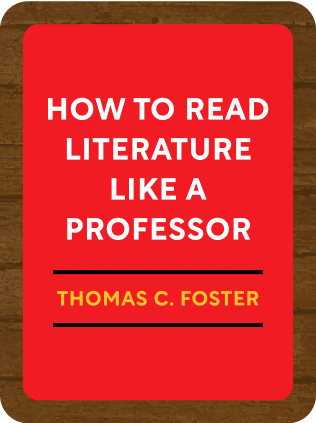

This article is an excerpt from the Shortform book guide to "How to Read Literature Like a Professor" by Thomas C. Foster. Shortform has the world's best summaries and analyses of books you should be reading.
Like this article? Sign up for a free trial here .
What are the most common quest archetypes? What should you look out for to know if a character is on a quest?
Anytime a character begins a trip, you should be on the lookout for a quest narrative. Literary quests typically consist of five elements: a quester, a place to go, a reason, challenges along the way, and the character learning about themselves.
Keep reading to learn why every trip is a quest in literature.
Know the Archetypes, Find Them Everywhere
All literature exists as part of one big story. Nothing is really new. Although every piece of literature is different, it still interacts with every written work that came before it. In fact, even if an author attempts to avoid referencing any other novels, that avoidance is an interaction in itself. In this article, we cover the “every trip is a quest” archetype.
One of the main benefits of the one big story is the emergence of archetypes. “Archetype” really just means “pattern,” or the original on which that pattern was based. No one knows the original use of archetypes, just like no one knows exactly where ancient myths began. They predate written history.
It doesn’t really matter where they come from, when they began, or how often they’re used. Archetypes grow in strength with each use in literature. They create an aha! moment for the reader—a satisfying moment when we recognize a pattern between what we’re reading now and what we’ve read before.
Archetypes and common patterns are always with us, because they’ve been a part of our collective consciousness for so long. They help writers and readers understand each other because we share knowledge of these archetypes and their role in the one big story.
Every Trip Is a Quest in Literature
Anytime a character begins a trip, you should be on the lookout for a quest narrative.
Example: In The Crying of Lot 49 by Thomas Pynchon, a young woman named Oedipa travels from San Francisco to Southern California to execute the will of her former lover. Along the way, Oedipa meets a lot of strange and scary characters and ends up in a lot of dangerous situations. By the end, Oedipa has learned to rely on herself and trust her own self-knowledge.
In this novel, Thomas Pynchon presents an example of a classic quest narrative.
Structurally, every quest consists of
- A quester: In this case, Oedipa, a young woman with many problems in her life
- A place to go: San Francisco
- A stated reason to go there: To execute a will
- Challenges along the way: Oedipa goes through a nightlong exploration, a dangerous visit to her therapist’s office, and a mysterious postal conspiracy
- The real mission: The real reason behind any quest is the search for self-knowledge
The stated reason to go on a quest is often in search of a “holy grail.” This can be as simple as going to the store to get a loaf of bread. Throughout the quest, the stated goal falls away and the real mission is revealed: the character learns about himself.
Questers are often young, inexperienced characters. This is because older characters would either already have self-knowledge or be too late to ever get it. In comparison, young characters have a lot of learning and development left to do.

———End of Preview———
Like what you just read? Read the rest of the world's best book summary and analysis of Thomas C. Foster's "How to Read Literature Like a Professor" at Shortform .
Here's what you'll find in our full How to Read Literature Like a Professor summary :
- How to get more out of the novels that you read
- Why you should focus on memory, symbols, and patterns to understand literature better
- Why sex scenes aren't always about sex






